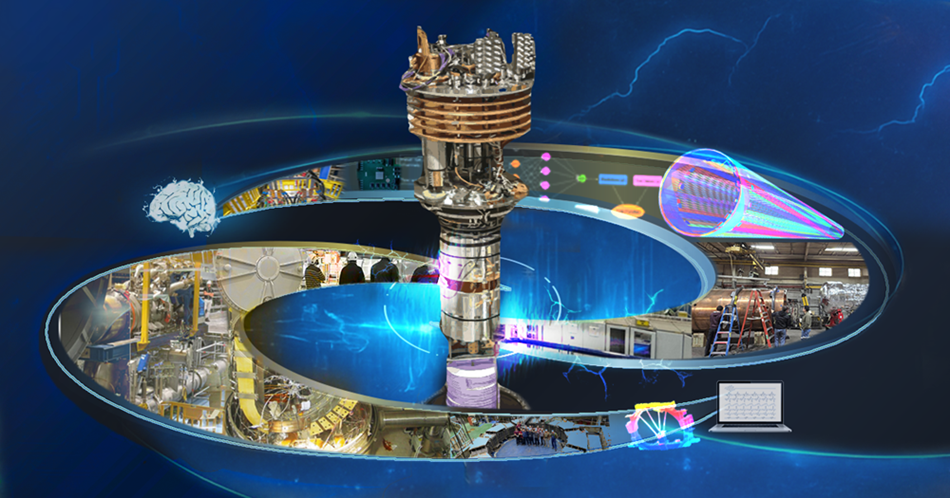About the lecture:
Superconducting magnets are at the heart of advanced scientific and industrial applications — their development presents great challenges. These are inherently complex, multiphysics systems in which many parameters remain uncertain or only partially understood. Achieving reliable, high-performance operation requires meticulous design and engineering across a wide range of...
About the lecture:
This lecture provides an introduction to the various cryogenic cooling methods used to operate superconducting systems, whether small or large, HTS or LTS, from the smallest pick-up coils for medical applications to the largest magnets or detectors for high-energy physics. The lecture is aimed at physicists and engineers working in the fields of applied superconductivity...
About the lecture:
Electrical transfer from a room temperature power source to a superconducting system can be done via conventional or superconducting current leads and superconducting buses or links. The principles of optimization of these devices are presented, with emphasis on the cryogenic, electrical, and superconductor related aspects that drive choices for a system.
About the...
In the design and use of superconducting magnets one must always ensure safe dissipation of the stored magnetic energy after a quench. External energy extraction with a dump resistor is relatively simple to implement, and it has the advantage of dissipating the energy outside of the cryostat. However, it’s capacity is limited by the maximum allowed voltage across the magnet terminals, which...
About the lecture:
Coupling-Loss Induced Quench (CLIQ) is a quench protection method for superconducting magnets developed at CERN, which relies on a capacitive discharge unit introducing an oscillation of the transport current in the superconducting cable of the coil. The resulting fast change of the local magnetic field introduces a high coupling-current loss, which, in turn, causes a...
About the lecture:
Electrical failures in superconducting circuits can cause severe damage to the equipment and even lead to personal injury due to high operating currents. Often a significant energy stored in the magnetic field generated by the superconducting magnets becomes an additional risk factor.
The lecture will cover various topics related to electrical integrity tests and...
About the lecturer:
Federico Scurti is an Assistant Professor in the Departments of Nuclear Engineering, Engineering Science and Mechanics, and Materials Science and Engineering at the Pennsylvania State University. His research focuses on advancing fiber optic sensing techniques for extreme environments, with particular emphasis on cryogenic systems such as superconducting magnets, as well...
About the lecture:
The course will give a brief introduction to the cryocooler principles and its main components, which is required to understand the interaction of the cooling source with the cooling object in question. The first part will cover a recap of the cryocooler principle for JT, Stirling, GM and Pulse tube. Cryocooler components and their performance influence will be covered,...
About the lecture:
Testing superconducting coils is always a challenge and of inestimable value to the magnet designer and manufacturer. It is also the last step in magnet production process, and the most exciting one!
In this lecture, I will provide an introduction to testing superconducting materials, focusing on various samples and HTS coils. Different types of test setups will be...
About the lecture:
We will discuss how we can build, use, and deploy modern machine learning and data analysis methods to quench diagnostics data. The lecture will discuss certain analysis, data curation, and selection procedures that are possible to train a machine learning model. We will also discuss how to practically apply these techniques to data at your test bench.
About the...
About the lecture:
This lecture walks through the complete testing workflow for FAIR Super-FRS superconducting magnets, highlighting the reasons behind each step and the technical challenges encountered. From mechanical installation to cryogenic connection, leak detection, cooldown, high-voltage verification, and magnetic qualification, each phase serves to confirm the magnet’s readiness...
About the lecture:
The lecture will describe how superconducting cables for fusion application (i.e. conductor with currents typically of 50-100 kA) are tested in the SULTAN facility. First, the sample preparation will be described, followed by the example tests and assessment of the test results. SULTAN facility belongs to Swiss Plasma Center of EPFL, Switzerland.
About the...
About the lecture:
The presentation shares experience gained from magnets testing, especially ITER, starting from the ITER EDA (Engineering Design Activities), then during construction phase of ITER to the latest tests of the CS modules that will go into ITER machine. Rational and justification for tests, things that only testing of the large magnets can reveal are discussed. Correlation...
About the lecture
This lecture will present recent advances in cryogenic test facilities for fusion superconducting (SC) magnet technology developed at the Institute of Plasma Physics, Chinese Academy of Sciences (ASIPP). It will cover the comprehensive test methodologies for SC materials, full-size conductors (including 100 kA-class cable-in-conduit conductors), and large-scale fusion...
This talk will describe the Superconducting Magnet Test Facility at MIT's Plasma Science and Fusion Center, starting with the facility's origin during the SPARC toroidal field model coil project, and following through its development to test subsequent magnets, including the SPARC central solenoid model coil. A discussion of the challenges of these projects will be included, from the scale of...
About the lecture:
This presentation highlights the critical need for co-development and co-testing of quench detection (QD) systems with superconducting magnets in fusion environments. For several years now, optical fiber based quench detection has shown much promise as an alternative quench detection technique in HTS magnets. The fusion environment poses unique challenges to both the HTS...
